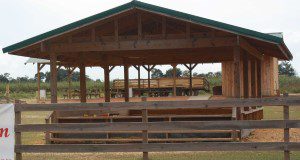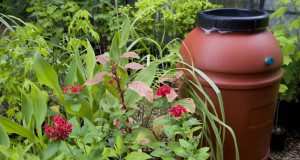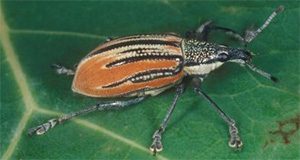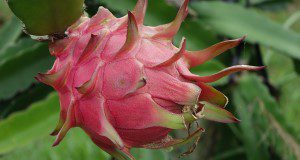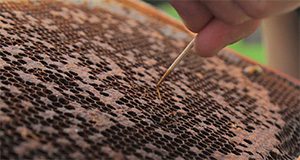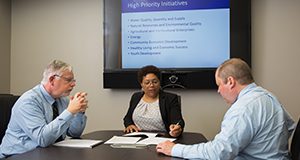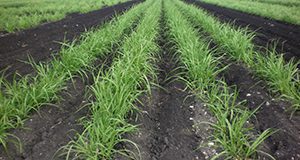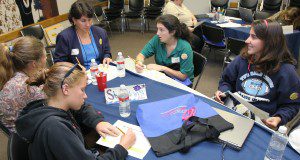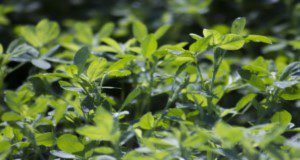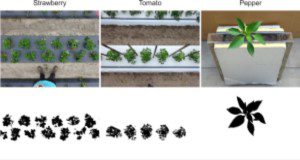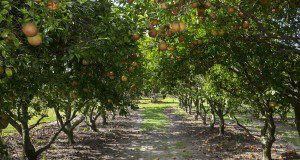Interest in understanding water use and irrigation costs has risen in recent years. This case study is a 5-page evaluation of water use and associated costs for residential landscape irrigation in Osceola County and Orange County, Florida. Homeowners in central Florida can use the results to assess their water consumption and bills in relation to similar homes in the area. Written by Nick Taylor, Tricia Kyzar, Pierce Jones, and Kaitlin O. Robb Price, and published by the UF/IFAS Department of Agricultural and Biological Engineering, December 2019.
https://edis.ifas.ufl.edu/ae536
Florida Agritourism Building and Fire Codes
Agritourism marries Florida’s two largest industries, tourism and agriculture, to provide an on-farm recreational experience for consumers. Although Florida trails many other states in the number of agritourism operations, the number of Florida farms offering recreational experiences more than doubled from 2007 to 2012. This new 4-page document describes building codes relevant to Florida agritourism operations. Written by Mary Beth Henry and Kathryn A. Stofer, and published by the UF/IFAS Department of Agricultural Education and Communication.
https://edis.ifas.ufl.edu/wc349
Floridians' Engagement in Landscape Best Practices to Protect Water Resources: Information from a 2018 Survey
Extension programs are most effective when informed by a deep understanding of the target audience. To guide programs in Florida’s managed landscapes, especially pertaining to water quality and conservation, faculty from the UF/IFAS Center for Landscape Conservation and Ecology conduct an annual statewide survey. The survey gathers data that includes common landscape elements, neighborhood characteristics, engagement in irrigation and fertilizer best practices, and learning preferences. This new 5-page publication of the UF/IFAS Department of Agricultural Education and Communication presents highlights from the 2018 statewide survey with recommendations for how to use the information. Written by Laura A. Warner, Esen Momol, Claire Lewis, Tom Wichman, Wendy Wilber, and A. J. Reisinger.
https://edis.ifas.ufl.edu/wc345
Use of Glyphosate and Herbicide Alternatives for Weed Control in Florida Landscape Planting Beds
This new 10-page article is written for landscape professionals and those maintaining landscape areas to guide them in selecting alternatives to glyphosate (the active ingredient in RoundUp®) for postemergence weed control in Florida. Information is also included on preemergence herbicides and integrated weed management (use of chemical and non-chemical controls), which should be the basis of a weed management program. Written by Chris Marble, Joe Neal, and Andy Senesac, and published by the UF/IFAS Environmental Horticulture Department.
https://edis.ifas.ufl.edu/ep580
Citrus Pest Quick Guide: Diaprepes Root Weevil (Diaprepes abbreviates Linnaeus)
A one-page quick guide written by Lauren M. Diepenbrock and Jamie D. Burrow and published by the Entomology and Nematology Department presents the life cycle of the Diaprepes root weevil and provides several photos of the pest and the damage it causes to assist in identification.
https://edis.ifas.ufl.edu/in1249
Stem and Fruit Canker of Dragon Fruit in South Florida
Dragon fruit, also known as pitahaya, pitaya, and strawberry pear, is a group of vine-like, climbing cacti. In south Florida, production of dragon fruit has been steadily increasing since the 2000s, and growers in Florida consider dragon fruit as a potential alternative fruit crop to avocado and citrus, two economically important fruit crops largely impacted by laurel wilt and huanglongbing, respectively. This new 4-page article focuses on the symptomology and epidemiology of stem and fruit canker, a prevailing disease on dragon fruit. Suggested management strategies for the disease are also discussed based on recent studies conducted in south Florida. Written by Cheng-Fang Hong, Shouan Zhang, Romina Gazis, Jonathan H. Crane, and Jeff Wasielewski, and published by the UF/IFAS Plant Pathology Department.
https://edis.ifas.ufl.edu/pp355
Applying Culturally Relevant Teaching to Workshops: The Checklist
As the diversity of Extension clientele continues to grow, Extension educators must consider new ways of supporting this population. In this new 2-page article, a follow-up to EDIS article AEC678, Culturally Responsive Teaching: A Framework for Educating Diverse Audience, the authors provide a checklist to serve as a guiding tool when planning workshops and to ensure that participants feel connected to, engaged with, and understood while working toward achieving workshop educational goals. Written by Cecilia E. Suarez, John M. Diaz, and Laura E. Valencia, and published by the UF/IFAS Department of Agricultural Education and Communication.
https://edis.ifas.ufl.edu/wc351
Identification and Treatment of European Foulbrood in Honey Bee Colonies
European foulbrood is a bacterial disease that affects Western honey bee larvae. It is a concern to beekeepers everywhere, though it is less serious than American foulbrood because it does not form spores, which means that it can be treated. This 7-page fact sheet written by Catherine M. Mueller, Cameron J. Jack, Ashley N. Mortensen, and Jamie Ellis and published by the UF/IFAS Entomology and Nematology Department describes the disease and explains how to identify it to help beekeepers manage their colonies effectively and prevent the spread of both American and European foulbrood.
https://edis.ifas.ufl.edu/in1272
Bringing Home the Bacon: Infusing Evaluation Best Practices into Grant Proposals
Proposals possessing sound and well-funded evaluation plans are normally stronger and have greater chances of being funded. This new 4-page publication of the UF/IFAS Department of Agricultural Education and Communication shares information the authors learned during a series of meetings with federal agency program officers and evaluators about best practices for grant proposals. The practices encompass two broad categories: incorporating evaluation expertise into the project team and building a sound project rationale and evaluation plan. By adopting these practices, you will enhance the quality of your proposals; you will most likely increase the amount of extramural funding that is secured; and you will elevate the visibility and impact of programs within your organization. Written by Glenn Israel, Jaclyn D. Kropp, David C. Diehl, Conner Mullally, and Sebastian Galindo.
https://edis.ifas.ufl.edu/wc350
Hop Yard Establishment and Trellis Construction in Florida
Hops (Humulus lupulus L.) are an essential ingredient in brewing, adding bitterness and flavor to beer. Driven by the recent craft beer movement, hop production is expanding into nontraditional hop-producing states. In Florida, while commercial hop production is almost nonexistent, the number of craft breweries in Florida increased from 45 in 2011 to 285 in 2018, and the economic impact of Florida’s craft beer industry exceeds $3 billion. This new 7-page article, written by Shinsuke Agehara, Aleyda Acosta-Rangel, Zhanao Deng, Jack Rechcigl, and Simon Bollin and published by the UF/IFAS Horticultural Sciences Department, provides guidelines and considerations for building a hop yard in Florida, using the UF/IFAS Gulf Coast Research and Education Center’s research hop yard as a model.
https://edis.ifas.ufl.edu/hs1354
Sugarcane Cultivar Descriptive Fact Sheet: CP 06-2400, CP 06-2042, and CP 07-2137
This 5-page fact sheet provides basic information and yield and disease information for CP 06-2400, CP 06-2042, and CP 07-2137 to assist growers in better selection and management of these cultivars. Written by Hardev Sandhu, Matt VanWeelden, and Wayne Davidson, and published by the UF/IFAS Agronomy Department, December 2019.
http://edis.ifas.ufl.edu/sc106
Exemplary Youth Leadership Series: Inspire a Shared Vision
This publication series is designed to outline strategies and experiences to expose youth to and engage them with leadership concepts. In this series, activities have been developed to introduce youth to Kouzes and Posner’s five practices of exemplary leaders. This new 2-page article allows students to engage with the second practice: inspiring a shared vision. Leaders shape the trajectory of their organization. The two outlined activities help students illustrate the idea of creating a unique vision and recruiting others to follow that vision. Written by Megan Stein and published by the UF/IFAS Department of Agricultural Education and Communication.
https://edis.ifas.ufl.edu/wc348
Red Heart Disease in Pines caused by Porodaedalea (Phellinus) pini in Florida

All pine species in Florida are susceptible to red heart disease. The disease can decrease timber value and weaken trees, making them threats to people and property. In forests, however, the same disease can be beneficial to cavity-nesting animals like red-cockaded woodpeckers. This 3-page fact sheet written by Yin-Tse Huang, Jeffrey Eickwort, and Jiri Hulcr and published by the UF/IFAS School of Forest Resources and Conservation describes the disease and provides some tips to manage it in areas where it could cause problems for people.
http://edis.ifas.ufl.edu/fr425
Condensed Tannins in Forage Legumes
The use of tannin-containing forages has received attention from researchers around the globe because of potential benefits of condensed tannins to livestock health and nutrition as well as possibilities to reduce methane emission. This new 4-page publication of the UF/IFAS Agronomy Department targets two audiences: Extension faculty who need information on potential benefits and negative effects of condensed tannins to livestock production, and producers who intend to feed tannin-containing forages in their operation. Written by Flavia van Cleef and Jose Dubeux.
https://edis.ifas.ufl.edu/ag440
Considerations for Selection and Use of Ornamental Grasses
Ornamental grasses create interest and excitement in the landscape with their unique characteristics. The availability of a large number of species and cultivars makes these plants very versatile, with many potential uses in the landscape. This publication outlines many of the considerations for the proper selection and use of ornamental grasses. The information and tables should assist the first-time gardener as well as the experienced landscaper in the selection and use of ornamental grasses in Florida. This 9-page major revision was written by Mack Thetford and Mary Salinas and published by the UF/IFAS Environmental Horticulture Department.
https://edis.ifas.ufl.edu/ep233
Simple Imaging Techniques for Plant Growth Assessment
Quantification of plant phenotypic traits, such as height, width, stem diameter, and leaf area, is often performed manually in the field; however, these measurements can be performed more quickly and precisely through simple imaging techniques using an image processing program. This new 5-page publication of the UF/IFAS Horticultural Sciences Department, written by Shinsuke Agehara, describes simple imaging techniques for plant growth assessment using the public domain program ImageJ.
https://edis.ifas.ufl.edu/hs1353
The invasive shot hole borers Euwallacea fornicatus, E. kuroshio, and E. perbrevis (Coleoptera: Curculionidae: Scolytinae)
Invasive species, those that are nonnative and cause economic damage, are one of the main threats to ecosystems around the world. Ambrosia beetles are some of the most common invasive insects. Currently, severe economic impacts have been increasingly reported for all the invasive shot hole borers in South Africa, California, Israel, and throughout Asia. This 7-page fact sheet written by Demian F. Gomez, Jiri Hulcr, and Daniel Carrillo and published by the School of Forest Resources and Conservation describes shot hole borers and their biology and hosts and lists some strategies for prevention and control of these pests.
http://edis.ifas.ufl.edu/fr422
Choosing the Right Blackberry Cultivar in Subtropical Florida
Blackberry (Rubus spp.) is a deciduous berry crop and the fourth most economically important berry crop in the United States. Driven by the growing demand for blackberries, production recently expanded to the southeastern United States. In Florida, however, commercial blackberry production is limited primarily to small commercial U-pick operations. The main challenges include insufficient chill hours and poor fruit quality associated with the subtropical climate. This new 6-page article, a publication of the UF/IFAS Horticultural Sciences Department, will discuss important cultivar selection criteria and recommended blackberry cultivars in subtropical Florida. Written by Shinsuke Agehara, Syuan-You Lin, and Zhanao Deng.
https://edis.ifas.ufl.edu/hs1352
Florida Citrus Rootstock Selection Guide, 4th Edition
This updated 4th edition of the Florida Citrus Rootstock Selection Guide (FLCRSG) is a revision of the 2016 publication. The guide is a convenient, easy-to-use reference to 21 characteristics of 49 rootstocks. Of those, 12 are time-honored commercial rootstocks (highlighted in blue), which are the most reliably characterized. The next 13 rootstocks are minor commercial ones (highlighted in green) that are less frequently used today in Florida but may have been prominent at one time. The third group consists of the most recently released 24 rootstocks (highlighted in yellow) for which there is limited commercial experience. The new addition includes three new USDA rootstocks and updates information on a few traits. Written by William S. Castle, Kim D. Bowman, Jude W. Grosser, Rhuanito Soranz Ferrarezi, Stephen H. Futch, and Steve Rogers, and published by the UF/IFAS Horticultural Sciences Department.
https://edis.ifas.ufl.edu/hs1260
Have you seen a skinny alligator in South Florida?
The American alligator (Alligator mississippiensis) is an effective indicator for restoration of more natural patterns of water levels and flows through the Everglades. The Florida Everglades is a highly modified system, so monitoring health of alligators can inform how different areas of this large ecosystem are doing. Based on an increase in reports of very skinny alligators, biologists and natural resource managers are seeking help from the public to better understand where and when this problem occurs. This fact sheet serves as a guide for citizen scientists on how to score alligator body condition and report sightings of very skinny or unhealthy alligators.
http://edis.ifas.ufl.edu/uw460

